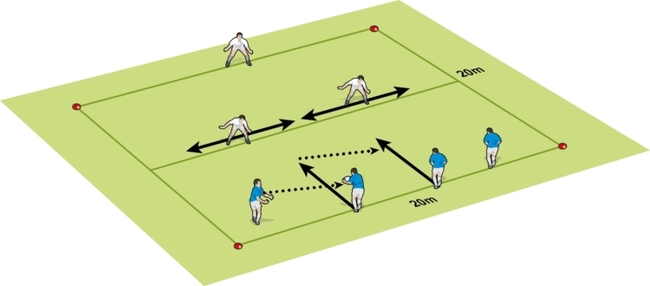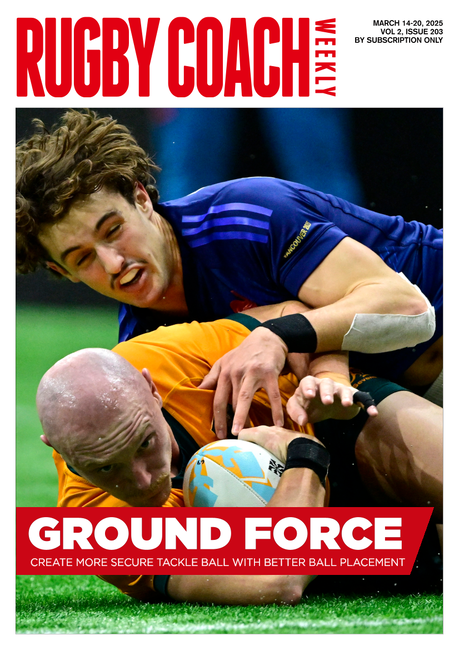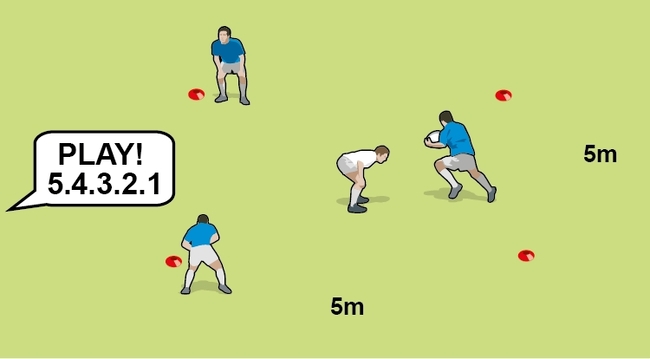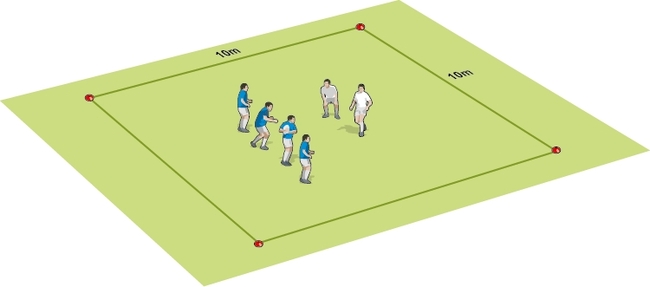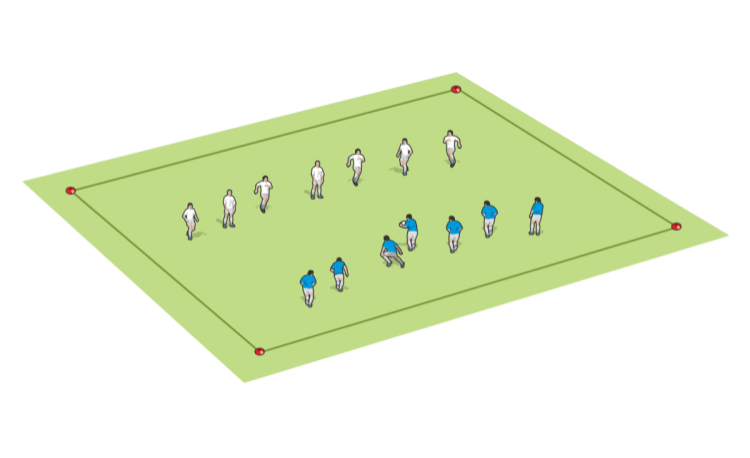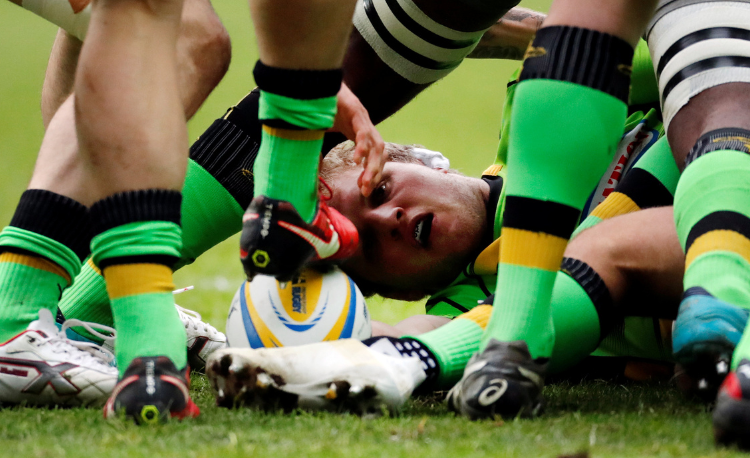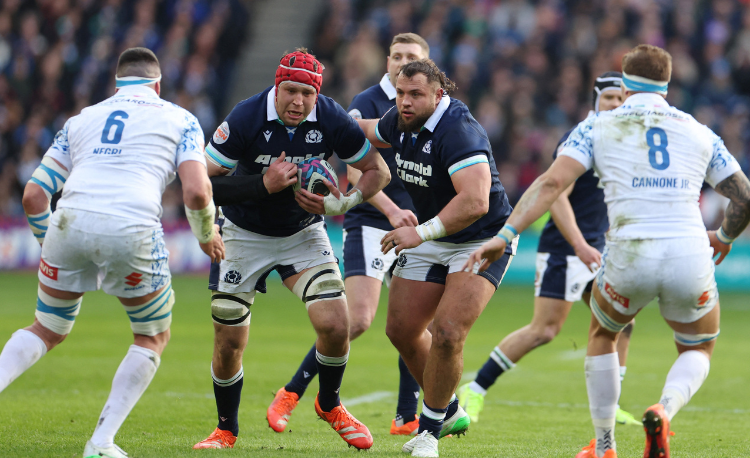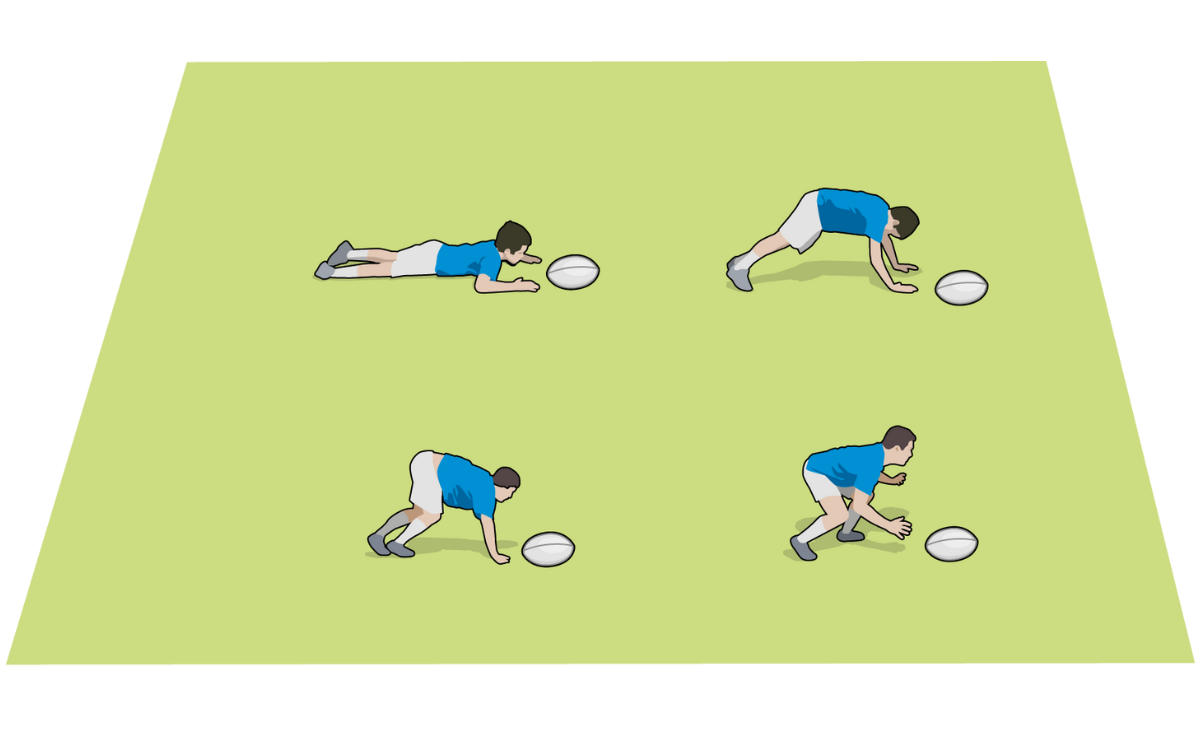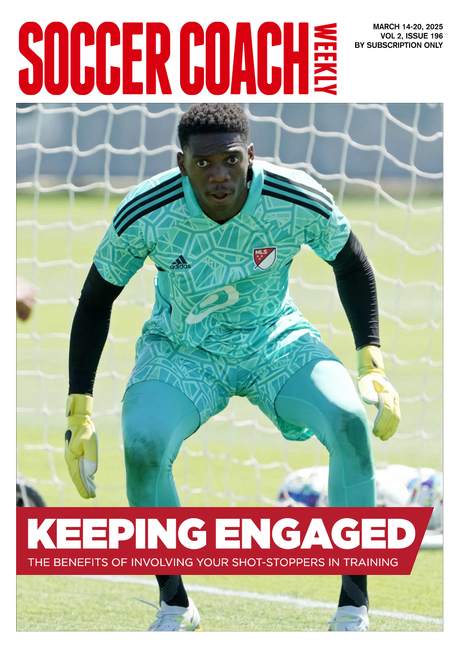The personal touch - great ways to use touch rugby
Small-Sided Gamesby Dan Cottrell
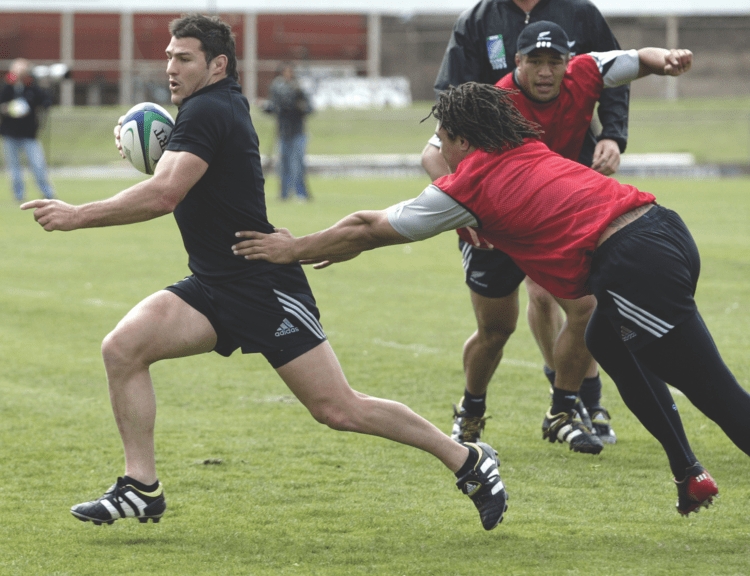
Touch rugby is perfect for maintaining fitness and team spirit during the close season. But to get the best out of this fast non-contact version of our sport, add in a few variations…
AVOID LARGE GROUPS
The worst touch rugby is when there are 10 or more players a side spread across the field. There’s too much inactivity and lazy play.
Touch rugby should engage (i)all(i) the players, (i)all(i) the time, leaving them tired at the end of a session. So split into smaller groups when player numbers approach 10 a side.
USE VARIATIONS
There are many variations in touch rugby, not only in format but also in constraints and opportunities. All are aimed at making the best use of the game. Here are some examples.
Three-second touch
The tackled player has 3 seconds to pass once touched. A touched player can’t score a try. If the ball isn’t released in time, award a turnover. There’s no offside after a turnover.
The game encourages support and passing in the tackle, and gives slower forwards the chance to play an active part when taking the ball forward. It makes players take up better body positions through a potential contact situation.
Double touch
A player can be touched once. If touched a second time, the ball is turned over. A touched player can’t score.
The game promotes support running but also cover defence. Since players can be tackled twice in quick succession, they learn to move the ball away from danger very quickly.
No-mistake touch
This helps forwards by allowing them to “rumble up” the pitch. Once touched, the player must put the ball through their legs at the point of tackle. Opponents must retire 5m.
There’s a turnover when the ball is dropped, goes into touch or is passed forward. There’s no limit to the number of touches a play may take.
You can’t restart within 5m of the try line. So if a tackle is made in the 5m space in front of the try line, the ball is placed on the 5m line. The same goes for a turnover ball.
The main downside of this game is the potential poor body positions it encourages, since there’s no need to recycle the ball quickly. However, players soon recognise that better presentation will open more gaps.
And it makes the defence more “honest” closer to the action. The defence either side of the tackle will need to move up quickly to prevent the 5m gap being exploited.
CONSTRAINTS
You can change the game to suit the circumstances. For instance, a high-scoring game with two-handed touch tackles can be changed to a low-scoring game of greater skill by introducing a one-handed touch.
Try using these constraints to add different pressures and work your players outside the comfort zone:
Ball on the ground
Normally if the ball goes to ground in touch, a turnover is declared to avoid contact. This rule can be relaxed on occasions, especially with more experienced and older players, so players have to field the ball quickly from the floor.
One-hand or two-hand touch
A one-handed touch is better when you have few players and a wide field. A two-handed touch means harder work for the defence, so players have to be in a better body position to make the tackle.
See the All Blacks playing touch rugby. Rules here are two-handed touch, and after a touch the ball carrier goes to ground and pops the ball up to a team-mate, while the nearest attacker and nearest two defenders must do a press-up before re-entering the game.
Click below for one of my touch rugby activities.
Newsletter Sign Up
Coaches Testimonials

Gerald Kearney, Downtown Las Vegas Soccer Club

Paul Butler, Florida, USA

Rick Shields, Springboro, USA

Tony Green, Pierrefonds Titans, Quebec, Canada
Subscribe Today
Be a more effective, more successful rugby coach
In a recent survey 89% of subscribers said Rugby Coach Weekly makes them more confident, 91% said Rugby Coach Weekly makes them a more effective coach and 93% said Rugby Coach Weekly makes them more inspired.
Get Weekly Inspiration
All the latest techniques and approaches
Rugby Coach Weekly offers proven and easy to use rugby drills, coaching sessions, practice plans, small-sided games, warm-ups, training tips and advice.
We've been at the cutting edge of rugby coaching since we launched in 2005, creating resources for the grassroots youth coach, following best practice from around the world and insights from the professional game.
